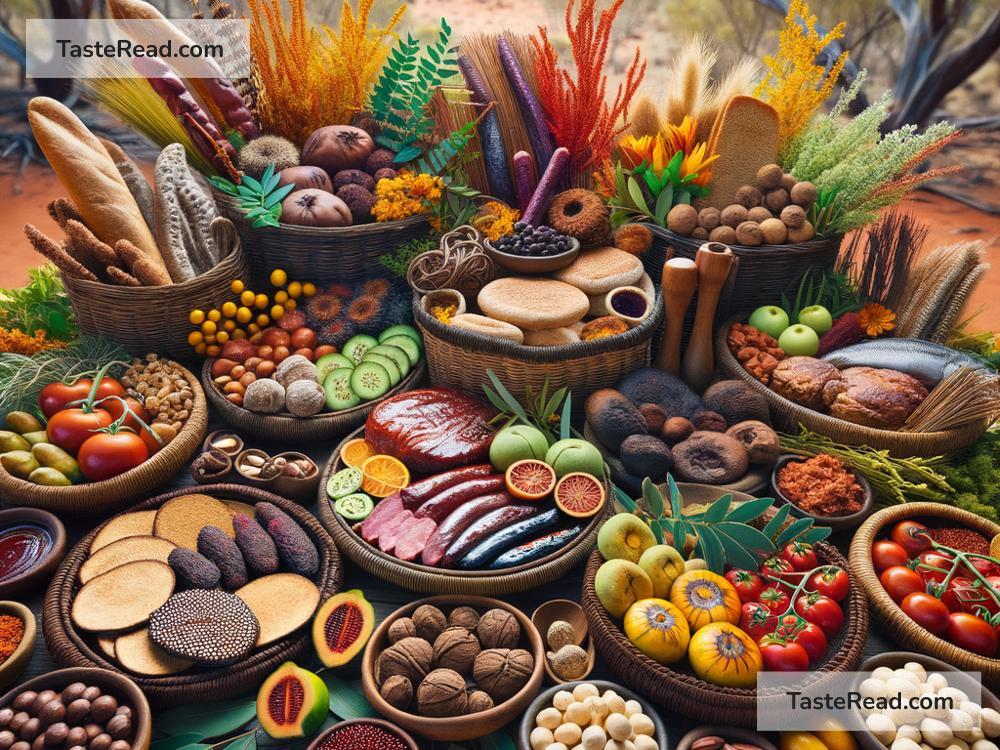Discover Traditional Australian Bush Tucker Foods from Indigenous Communities
Australia is home to a rich and ancient culture that dates back tens of thousands of years. Indigenous Australians, the First Peoples of the land, developed a deep understanding of nature, using what the land provided to create a sustainable way of life. The traditional foods eaten by Indigenous communities are often referred to as “bush tucker.” These foods not only nourished people but also played an important part in their connection to the environment, culture, and traditions. Let’s explore some popular bush tucker foods and learn about their cultural significance.
What is Bush Tucker?
Bush tucker refers to native Australian plants, fruits, seeds, herbs, and animals that Indigenous Australians have used for centuries. These foods are perfectly adapted to Australia’s unique landscape, ranging from dry deserts to lush rainforests. Indigenous communities used their deep knowledge of the environment to identify edible resources, prepare meals, and manage sustainable hunting and gathering practices. Bush tucker is more than food; it reflects deep respect for the land and its gifts.
Native Fruits and Nuts
Australia’s natural environment is home to many native fruits and nuts that Indigenous people used in their diets. These foods are highly nutritious and packed with flavor.
-
Kakadu Plum (Bush Plum)
Kakadu plum is often called a “superfood” because it contains more vitamin C than any other known fruit. Indigenous communities in northern Australia have long used this fruit for its medicinal properties and as a food source. It tastes tangy and is now popular in modern health products, such as jams and sauces. -
Quandong
Known as the “wild peach,” quandong is a bright red fruit with a tart flavor. Indigenous Australians used it both as food and medicine. The seeds were sometimes ground into flour, while the fruit itself was eaten fresh or dried for storage. -
Macadamia Nuts
Indigenous Australians have long harvested macadamia nuts, which are native to Australia. They cracked open the hard shells to enjoy the creamy, buttery nuts inside. Today, macadamias are loved worldwide, but they were first enjoyed by Australia’s First Peoples. -
Finger Lime
Finger limes are small, elongated fruits filled with tiny juice-filled beads that burst with a tangy citrus flavor. Indigenous people used finger limes in their meals, and recently, this “lime caviar” has become very popular in gourmet dishes.
Native Plants and Roots
Plants and roots provided essential nutrients, even in Australia’s harsh environments.
-
Wattle Seeds
Wattle seeds come from the acacia tree, which is common across Australia. Indigenous Australians ground these seeds to make flour for damper (a type of bread) or cooked them over fire. Wattle seeds are high in protein and have a nutty flavor. -
Bush Tomatoes
Found in arid regions, bush tomatoes are small, flavorful fruits. Indigenous people often dried them for storage and mixed them with other foods. Their intense flavor makes them a favorite ingredient in chutneys and sauces. -
Yam Daisy (Murnong)
This small root vegetable was once a staple food for Indigenous Australians. It has a sweet and nutty taste, similar to sweet potatoes. The yam daisy was usually roasted or eaten raw.
Native Herbs and Spices
Indigenous Australians used herbs and spices to enhance the flavor of their food and also for medicinal purposes.
-
Lemon Myrtle
Lemon myrtle is a fragrant herb with a strong lemon flavor. It was used as a seasoning or steeped in water to make a refreshing tea. It’s now widely used in cooking and skincare products. -
Pepperberry
Native pepperberries add a spicy kick to meals. Indigenous Australians used them for both flavor and their antifungal medicinal properties. Today, pepperberries are found in gourmet spice blends. -
Saltbush
Saltbush is a hardy plant that grows in dry areas across Australia. Indigenous communities used its leaves to add a salty flavor to food, and sometimes these leaves were also consumed directly.
Native Animals
Indigenous Australians were skilled hunters and fishers, relying on native animals for food.
-
Kangaroo
Kangaroo has been a valuable source of protein for Indigenous Australians for thousands of years. It is lean meat that is often cooked over an open fire. Today, kangaroo meat is popular in modern Australian cuisine. -
Emu
Emus, the large flightless birds, were another important food source. Indigenous communities used every part of the bird—the meat was cooked and eaten, while the fat was used for medicinal ointments. -
Goanna
Goannas, large lizards found in Australia, were hunted for food. They were often cooked over fire, offering a rich source of protein. -
Fish and Seafood
Indigenous Australians living near rivers, lakes, and oceans relied on fish, shellfish, and crustaceans. They developed sustainable fishing techniques to ensure continued access to food.
Cultural Significance
Bush tucker isn’t just about survival—it’s deeply tied to Indigenous culture. Food was shared among communities, fostering connection and cooperation. Indigenous Australians believed in taking only what was needed to ensure the land stayed healthy for future generations. This respect for nature and sustainable practices is something we can all learn from today.
Modern Appreciation of Bush Tucker
Bush tucker is increasingly popular in Australia’s food industry. Chefs embrace native ingredients to create unique dishes that celebrate this ancient culinary tradition. Additionally, there is growing recognition of the importance of Indigenous knowledge and practices for sustainability.
Conclusion
Traditional bush tucker foods remind us of the incredible connection between Indigenous Australians and their environment. These native foods are not only nutritious and delicious but also tell stories of history, culture, and respect for the land. As we learn more about bush tucker, we gain greater appreciation for Indigenous knowledge and their harmonious way of living with nature. So next time you see kakadu plum, lemon myrtle, or kangaroo on a menu, remember the ancient traditions that continue to inspire the flavors of modern Australia.


